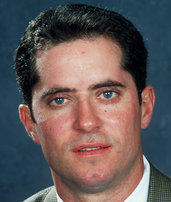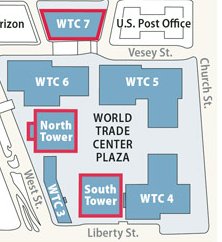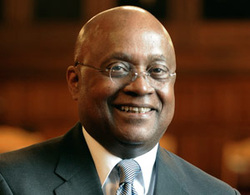World Trade Center Litigation
Ten years after the events of 9/11, several recent Court decisions have analyzed whether U.S. airline companies, security personnel, and building designers should have anticipated and perhaps prevented the 1993 and 2001 attacks. A summary of these recent developments appears below.
Family of 9/11 Airline Victim Settles Last Remaining Lawsuit Against Airlines, Security

Mark Bavis (Associated Press)
The family of former National Hockey League player and talent scout Mark Bavis recently reached an agreement with United Airlines to settle their lawsuit for an undisclosed sum before a scheduled trial in November. The settlement brings to an end a wrenching legal battle in Federal District Court in Manhattan, where lawsuits had been filed on behalf of 85 people who were killed in the attacks and an additional 11 who were injured, Court records show. Ten years after the terrorist attacks, the Bavis case was the last lawsuit remaining. The agreement came after the Plaintiff's opposition to a motion allowed voluminous evidence of the flawed airline security system to become public, including some information not previously available (such as the fact airline security personnel did not speak English and did not know who Al Qaeda were). That, coupled with a judge's ruling creating a more difficult burden of proof for the Plaintiff to prevail spurred the case's settlement.
Con Ed’s Lawsuit Regarding Collapse of World Trade Center 7 Dismissed; No Foreseeability of Events

A federal judge has dismissed negligence claims by Con Edison over the destruction of 7 World Trade Center on Sept. 11, 2001. Southern District Judge Alvin K. Hellerstein, in In re September 11 Litigation, 21 MC 101, said the chain of events that led to the destruction of 7 World Trade Center was "much too improbable to be consistent with any duty" toward Con Edison by builder and developer Larry Silverstein and Citigroup, the successor-in-interest to the building's primary tenant, Salomon Brothers. The building caught fire from flaming debris scattered after planes hijacked by terrorists slammed into the twin towers and ignited fires that caused their collapse. The 47-story 7 World Trade Center collapsed at 5:21 p.m. on 9/11, destroying a Con Edison substation. With so many firefighters dead from the collapse of the towers next door, and the water system destroyed, there was no way to stop the fire, which was made worse when the diesel tanks inside the building exploded.
Port Authority Ruled Not Liable in 1993 WTC Terror Bombing, Shielded By Governmental Immunity

Judge Theodore T. Jones Jr.
The Port Authority of New York and New Jersey has governmental immunity against liability for the 1993 bombing of the World Trade Center by terrorists who set off an explosive-laden van in the underground parking lot, a divided state Court of Appeals ruled last month. Six people were killed in the attack and nearly 1,000 were hurt when the bomb blasted a six-story deep crater under the building. About 180 claims involving 600 plaintiffs were filed, many of them contending that the Port Authority ignored repeated warnings by security experts about the symbolic value of the Trade Center complex as a terrorist target and the vulnerability of its parking garages to vehicles packed with explosives. The ruling overturned a decision by the Appellate Division, First Department, which found the Port Authority 68 percent responsible for the attacks and the terrorists 32 percent responsible. The Port Authority has argued for years that not only did it have governmental immunity from liability, it made no sense to hold the agency twice as responsible for the damages for an attack willfully launched by terrorists.The 4-3 majority of the state's highest court accepted the agency's position.The governmental immunity doctrine is "intended to afford deference to the exercise of discretion by the officials of municipalities and governmental entities," especially with regard to the allocation of limited police resources, Judge Theodore T. Jones Jr. wrote for the majority.
(The above content is all based on recent articles and analysis from the New York Law Journal).
Contact Us
-
14 Penn Plaza, Suite 2105
225 West 34th Street
New York, NY 10122 - (646) 484-5020
- (646) 429-9806
- info@taublawfirm.com
Quick Links
Stay Connected
Copyright 2018, All rights Reserved.
